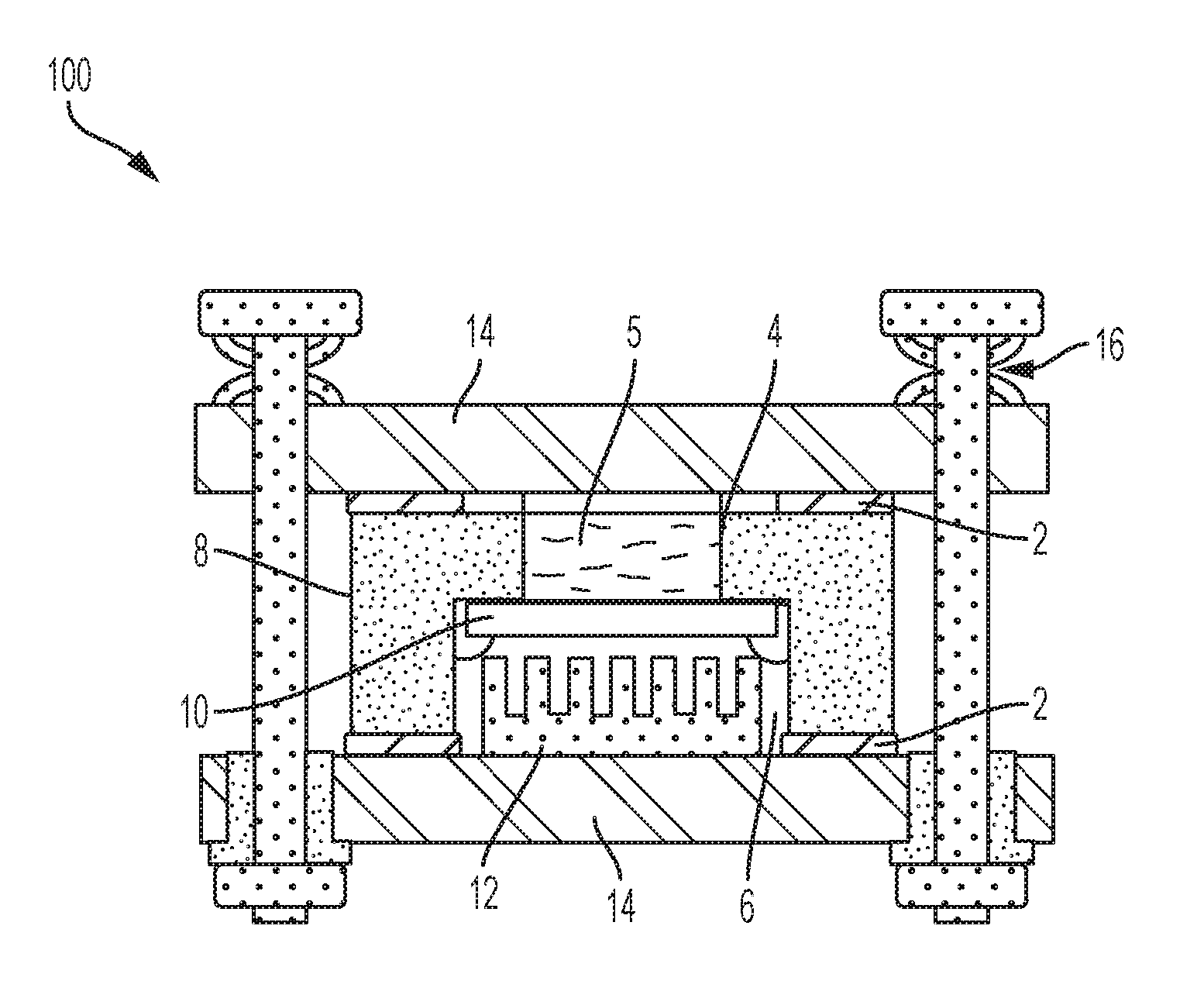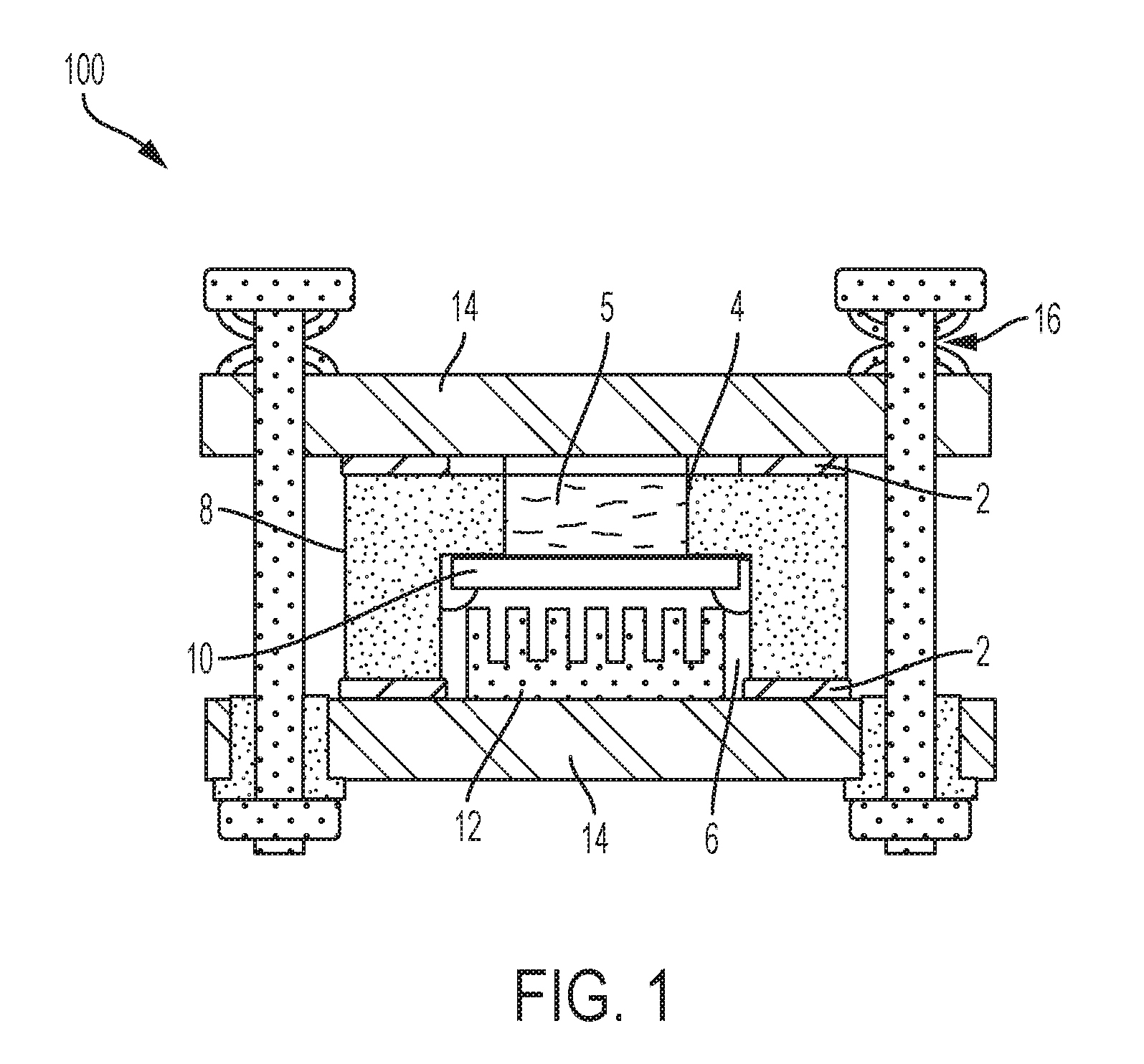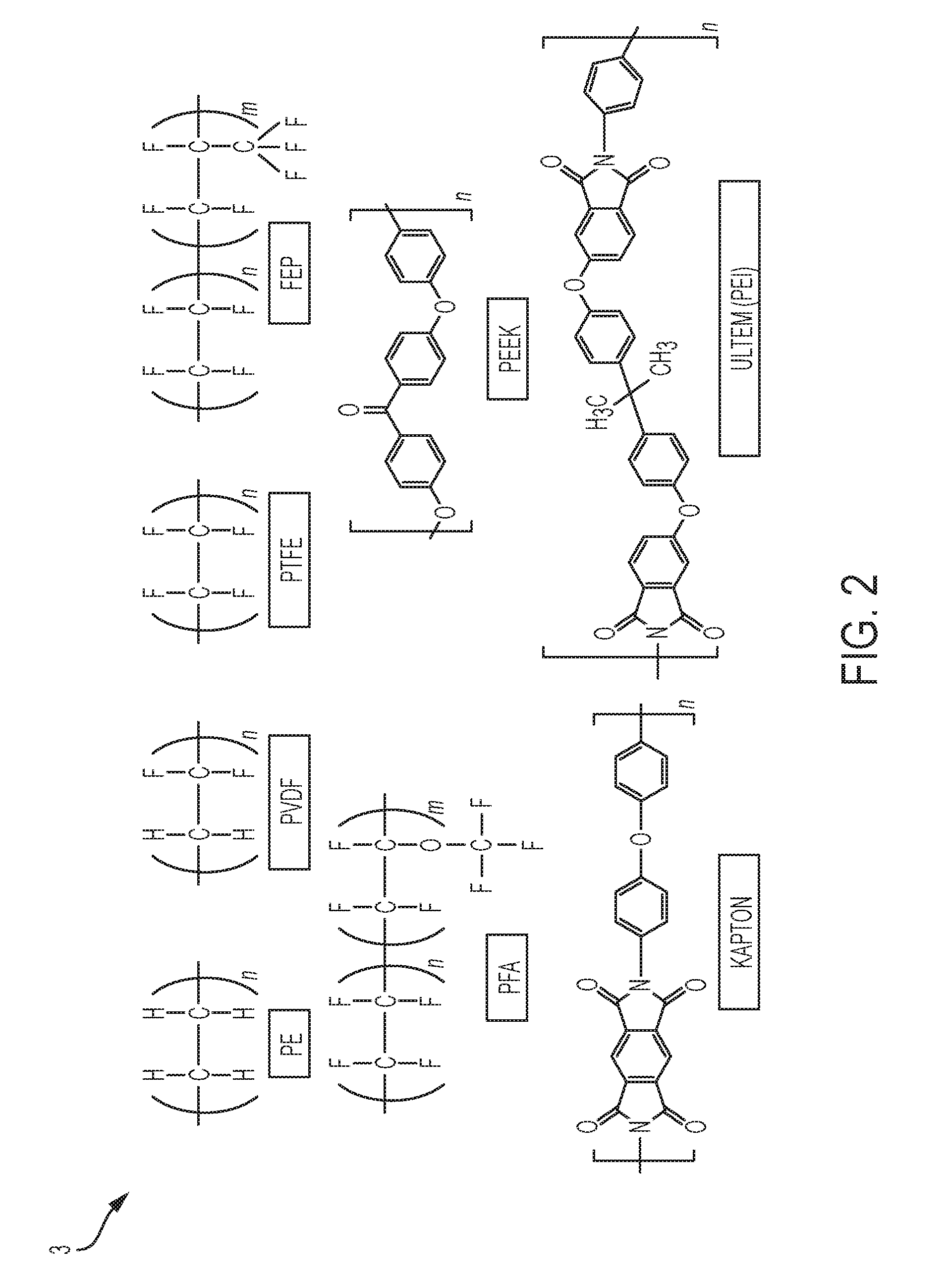Sodium conducting energy storage devices comprising compliant polymer seals and methods for making and sealing same
- Summary
- Abstract
- Description
- Claims
- Application Information
AI Technical Summary
Benefits of technology
Problems solved by technology
Method used
Image
Examples
example 1
[0051]Various polymers were tested for compatibility in contact with a cathode material, NaAlCl4, and with sodium metal used in the anode at 200° C. TABLE 1 lists polymers and results for the listed polymer seals.
TABLE 1CathodeAnodeElectrolyteSodium MetalPolymer[NaAlCl4][Na]PTFEGoodFailPVDFFailGoodFEPGoodFailPFAGoodFailPEIFailFailPEEKFailFailPIFailFailPEGoodGoodPTFE(polytetrafluoroethylene); PVDF(polyvinylidene fluoride); FEP(fluorinated ethylene propylene); PFA (Perfluoroalkoxy alkanes); PEI (polyetherimide) such as ULTEM ®; PEEK(polyether ether ketone); PI (polyimides) such as KAPTON ®; and UHMW PE(Polyethylene).
[0052]In some embodiments, viscosity, integrity, or mechanical strength of the polymer seal can be enhanced by addition of a modifier to the polymer or by encapsulating the modifier with the polymer. Modifiers suitable for use are compatible with the cathode, cathode electrolytes, and the anode. Preferred modifiers include, but are not limited to, for example, glasses; epo...
example 2
[0056]A planar cell was prepared in a nitrogen-purged glove box (O2 and H2O3COO)2) solution. Cathode granules comprised of Ni—NaCl (1.0 g, 157 mAh, 52.3 mAh cm−2) and 0.8 g of NaAlCl4 secondary electrolyte were loaded into the cathode chamber on the cathode side of the support at an elevated temperature of 200° C. and then vacuum infiltrated. A small amount of sodium metal (Aldrich 99.9%) was added to the anode shim at room temperature to facilitate an initial contact of molten sodium therein. Polymer O-rings were placed on the top (cathode) and the bottom (anode) of the support as a primary seal. PE and PVDF polymers were used to seal the anode chamber. Other fluorinated polymers (PTFE, FEP, PFA, etc.) and PE were used to seal the cathode chamber. The cell was initially cycled between the cutoff voltages of 2.8 V (charge limit) and 1.8 V (discharge limit) at 10 mA at a temperature of 190° C. in order to maximize cell charge capacity. After the initial charge / discharge cycle, fixed-...
PUM
 Login to View More
Login to View More Abstract
Description
Claims
Application Information
 Login to View More
Login to View More - R&D
- Intellectual Property
- Life Sciences
- Materials
- Tech Scout
- Unparalleled Data Quality
- Higher Quality Content
- 60% Fewer Hallucinations
Browse by: Latest US Patents, China's latest patents, Technical Efficacy Thesaurus, Application Domain, Technology Topic, Popular Technical Reports.
© 2025 PatSnap. All rights reserved.Legal|Privacy policy|Modern Slavery Act Transparency Statement|Sitemap|About US| Contact US: help@patsnap.com



